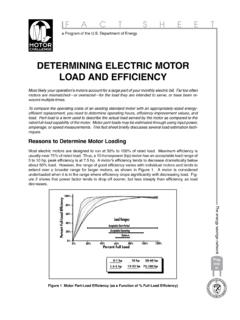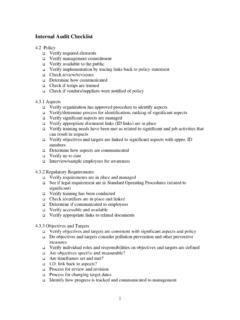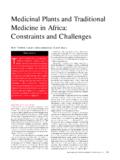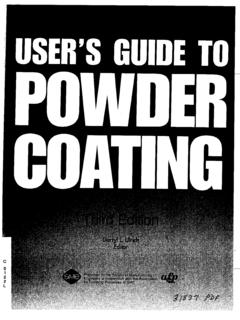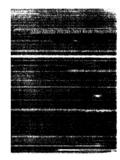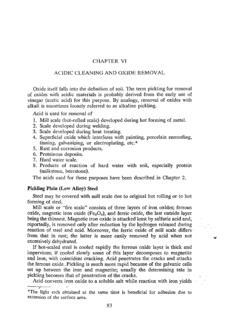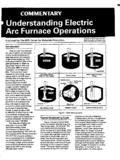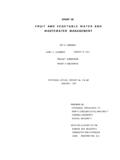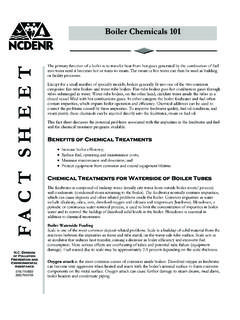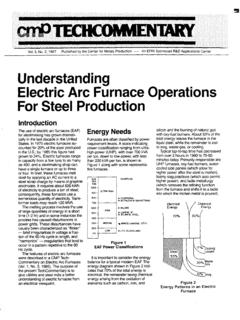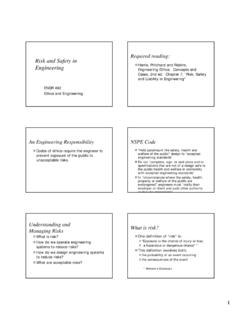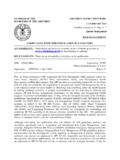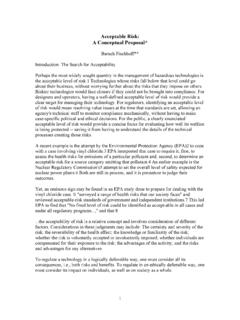Transcription of The Myth of 10-6 As A Definition of Acceptable …
1 I' 1 The Myth of As a Definition of Acceptable Risk (Or, "In Hot Pursuit of Superfund's Holy Grail") Kathryn E. Kelly, Presented at the 84th Annual Meeting of the Air and Waste Management Association Vancouver, , Canada June 1991 Envirronmentd Toxicology Intemational, Inc. I" 600 Building Si and Stewart, Suite 700 Seattle, WA 98101 USA Tdephone (206) 4416142 Facsimile (206) 443-1812 . INTRODUCI'ION 9 1 - 1 It is difficult to imagine a criterion in wider use in environmental legislation than It guides the use of pesticides and food additives; it defines our allowable exposure to groundwater contamination and incinerators. It is the most influential determinant we have in deciding what emissions should be allowed from stacks, how a hazardous waste site should be cleaned up, and how much Alar to leave on apples. is a shorthand description for an increased lifetime chance of in one (or one chance in 1,000,000) of developing cancer due to lifetime exposure to a substance.
2 It is an upper-bound limit which is not likely to underestimate risk. numericall represents an increase of approximately over our current chance of one in three (or represents 1 chance in 100,000, and so on. x 10- r ) from developing cancer from all causes in the Background level of exposure to environmental contaminants is estimated at to The vast majority of our exposure to carcinogens is thought to be due to those that occur naturally in our is therefore 1,000 to 100,000 times less than our current risk of background exposure to environmental contaminants or developing cancer from all causes. As risk, not an absolute or average value, the difference may actually be much greater. is an upper-bound estimate of The past, present, and future costs of achieving compliance with such a stringent criterion are virtually incalculable; certainly many billions of dollars have been spent in attempting to achieve this goal for cleanups at hazardous waste sites in the As a result, determining the origins of considerable social, scientific, and economic interest.
3 Is of Recent research has revealed that there is no sound scientific, social, economic or other basis for the selection of cost society billions of dollars, has never received widespread debate or even thorough regulatory or scientific review. It is an arbitrary level proposed 30 years ago for completely different regulations (animal drug residues), the circumstances of which do not apply to hazardous waste site regulation. As a result, implementing it consistently has frequently been socially, politically, technically, and economically infeasible. Although the benefits of generally have not been shown to outweigh the significant costs of attaining this goal, many state cleanup guidelines still advocate or require the use of as a cleanup goal for hazardous waste sites. Remarkably, this criterion, which has 10-6, Under these circumstances, communicating the meaning of and the Definition of " Acceptable relative to risk" poses considerable challenges to those responsible for explaining risk.
4 The origin of its use as a criterion of " Acceptable risk" is explored below. THE SURPRISING ORIGINS OF Recently, we conducted an extensive review to determine the origin of as a criterion of . " Acceptable risk."3 We began with an informal telephone survey of affected agencies and an extensive literature search. The conclusions of this survey include the following+ 2 9 1-1 1. None of the oflcials contacted at any federal or state agency currently using IO-6 as a criterion knew the basis of this criterion, nor is there any readily available documentation that specifically describes the origin of The extensive literature search included numerous toxicological, medical, regulatory, pollution, environmental, and governmental databases, that were queried back to the origin of each database (usually the mid-1970s). Not finding any written documentation, the authors began calling a "Who's Who" of the environmental industry.
5 The contacts included: 0 The WhiteHouse 0 The Environmental Protection Agency 0 The EPA's Science Advisory Board 0 The EPA's Risk Assessment Forum 0 The Food and Drug Administration e The Department of Agriculture 0 The Conference of Mayors 0 Oak Ridge National Laboratories 0 The Congressional Office of Technology Assessment 0 The Natural Resources Defense Council 0 Citizen's Clearinghouse for Hazardous Waste 0 Greenpeace 0 Two former EPA Administrators 0 A former state environmental commissioner 0 Rockefeller University 0 Environmental divisions of major law firms 0 Staff members of several Congressmen 0 And many other contacts in government and industry Despite widespread use of this criterion, none of the agencies could cite the source of although there was almost universal surprise that the origin of lom6 was not readily available. We were offered many good theories, but no written documentation.
6 A sample of the responses: 0 "My mind is a complete blank." 0 "My, what an interesting question!" 0 "I think it came from pesticides legislation or the Delaney Clause." 0 "It came from the FDA in the 1950's." 0 "It was derived from the Virtually Safe Dose used in the Safe Drinking Water Act." 0 "It's an economic criterion." 0 "It's based on the chance of being hit by lightening which is one-in-a-million," 0 "I just assumed it was because one-in-a-million sounded like such a nice phrase." 0 "It was selected because it was 'doable'. Or at least that's what we thought at the time." 0 "It was a purely political decision made by several of the major agencies behind closed 0 And our favorite, "You really shouldn't be asking these questions" (this from one of the doors in the 1970s. I doubt very much you'll get anyone to talk to you about it" federal agencies). 3 9 1 - 6 2. The concept of was originally an arbitrary number,jinalized by the US.
7 Food and Drug Administration fourteen years ago as a screening level of "essentially zero" or de minimis risk. This concept was traced back to a 1961 proposal by two scientistsfrom the National Cancer Institute regarding determining "st&fety'' levels in carcinogenicity testing. 3 The proposal for de minimis risk was contained in a 1973 notice in the Federal Register entitled Tompounds Used in Food-Processing Animals: Procedures for Determining Acceptability of Assay Methods Used for Assuring the Absence of Residues in Edible Products of Such Animals," commonly called the "Sensitivity of Method" regulations? The term de minimis is an abbreviation of the legal concept, "de minimis non curat lex: the law does not concem itself with trifles." In other words, "trifle" and not of regulatory concern. was developed as a level of risk below which was considered a The purpose of these proposed rules was to set forth guidelines with regard to appropriate assay methods for carcinogenic animal drugs "which may be administered to food-producing animals, but for which no residue is permitted in human food" under the Delaney Clause of 1958.
8 The rules were specifically prompted by the use of diethylstilbestrol (DES) as a growth promoter in cattle. In adopting a threshold of safety, the FDA referred to a 1961 article by Nathan Mantel and Ray Bryan, originators of the well-known Mantel-Bryan equation, on the subject of safety testing in animal studies. Mantel, a biostatistician at the National Cancer Institute, had been asked by the Director of the Institute to develop guidelines for the number of laboratory animals required to establish the safety of a substance. This in tum was in response to a request by the Secretary of the Department of Health, Education and Welfare to the NCI to help establish which cancer- causing substances were "safe" and at what levels following the Thanksgiving cranberry scare of 1959. (Trace residues of a cancer-causing herbicide were found in supplies of cranberries shortly before the holiday, prompting the Secretary to recommend against buying cranberries that year.)
9 This in tum set off a mild panic which nearly devastated the cranberry industry.) In their 1961 article, Mantel and Bryan reasonably pointed out that to define the parameters of safety testing, one must first come up with a Definition of safety. For the purposes of discussion, they said, we'll assume kfe" is equal to one chance in 100,000,000 of developing cancer. Asked how he came up with the number of one in one hundred million, Mantel replied, "We just pulled it out of a hat." After all, defining 'safe" was not the focus of their article. But this is the ultimate origin of 10-6, FDA initially adopted this "one in 100,000,000" in their 1973 proposal, but changed this value to one in 1,000,000 by the time the final rule was issued in 1977. "One in one million" was thus established as the "maximum lifetime risk that is essentially zero", or the level below which no further regulatory consideration would be given regarding the safety of residues of a carcinogenic animal drug.
10 Only two comments were received on these proposed rules, despite a specific request from the FDA Commissioner for public comment on the setting of one-in-a-million risk as a threshold of "essentially zero" risk. 4 e 9 1 - 1 3. In the FDA legislation, the regulators specifically stated that this level of "essentially zero" was not to be interpreted as equal to an Acceptable level of residues in meat products4 Nevertheless, many current regulations and guidance documents have done exactly that: interpreted this "essentially zero" level developed by the FDA, a level below which there would be no regulatory consideration given regarding safety, as a maximum " Acceptable !' level of risk. An analogy to automobiles is that if we could not measure when a car were standing completely still, the FDA might consider one mile per hour a "virtually safe" rate of speed. Below this rate either speed is unmeasurable, or the costs of such measurements outweigh the benefits of the information gained.
